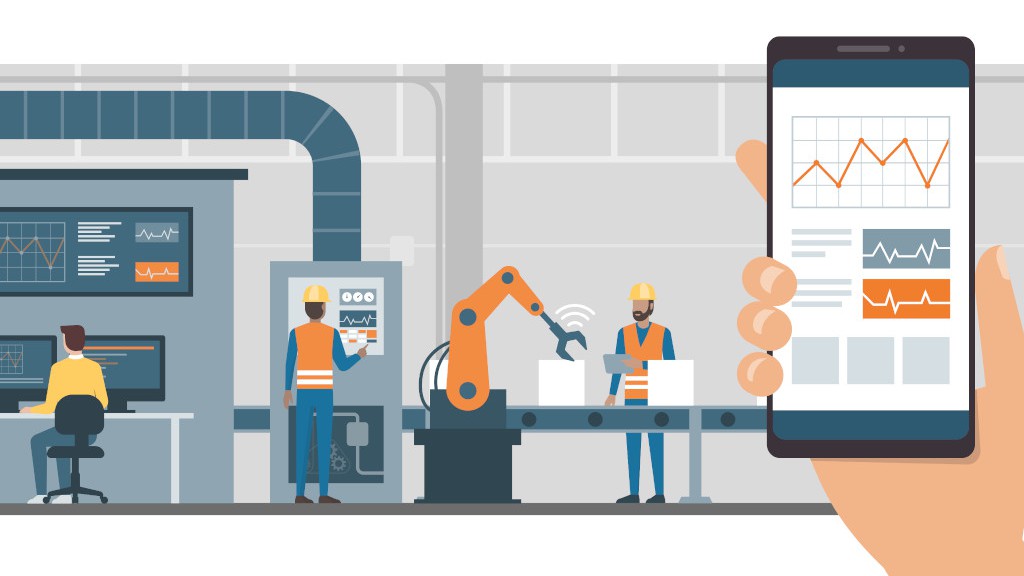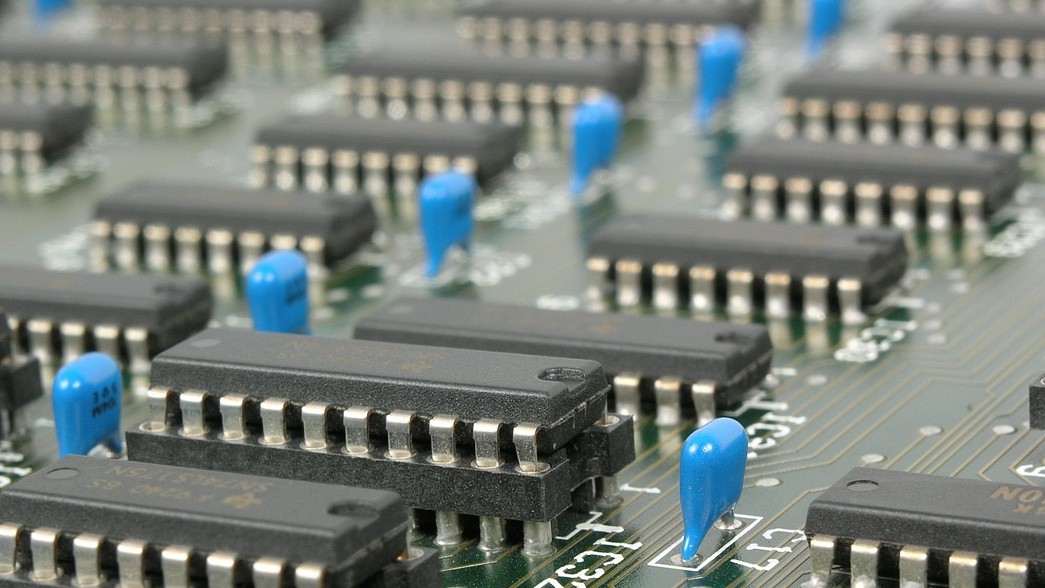“Fourth Industrial Revolution” is a term being thrown around frequently in smart factory, automation, and general manufacturing circles, but what does it mean for the owners and operators on the ground?
Does the so-called fourth industrial revolution come with tools, industrial computers, and strategies that can actually help us? Does the fourth industrial revolution even exist, and if it does, are we past it, in it, or approaching it quickly?
What can we do to take advantage of this new wave of technology and industrial philosophy?
What is the Fourth Industrial Revolution?
Article Guide
The term was coined in a 2015 article by the chairman of the World Economic Forum, Klaus Schwab, to refer to the influx and combination of technologies that could lead to massive economic disruption.
The first industrial revolution marked the appearance of steam and water-powered machines creating standardized parts, while the second industrial revolution in the 1850’s brought steel, chemical, and mass production based off electrical power. The third industrial revolution is generally considered to have started around the 1950’s, with the rise of computers, more advanced communication networks, and the first early robots in places like the automotive industry.
Technologies like automation/robotics, internet-of-things devices, industrial tablets, AI, self-driving cars, and bio/nanotech are often cited as the first markers of what Schwab dubbed the “fourth industrial revolution.” Namely, the term refers to the interconnectivity of all of these devices to create a web of thought and action that has the power to change every component of our society.
And in no field will this revolution hit harder than in the realm of manufacturing, logistics, and transport.
Implementing the Basics of Industry 4.0
The industrial and manufacturing aspects of the fourth industrial revolution are often referred to as “industry 4.0,” though the terms are often confused or used interchangeably. Either way, it doesn’t matter — all that matters is making the most out of this new paradigm, making hay while the sun shines, as it were.
Automation is probably the first move most manufacturers will take toward implementing the strengths of industry 4.0 — to some extent or another, most manufacturers have already taken this step.
The first step to a connected smart factory is to reinforce the network architecture — with every industrial computer, device, robot, and sensor all taking up constant (and increasing) bandwidth, internet speed, efficiency, and access become paramount. If you’ve been putting off a strong wireless strategy in your warehouses and factory floors, now’s the time to install strong wifi nodes to blanket the entire area.
The second step for industry 4.0 is a coherent sensor installation strategy for all machines and moving parts of the facility. The sensors in question will depend on your factory and product, but keeping a close eye on temperature, vibration, and other parameters doesn’t just help spot and correct stalls or damage. Combined with data analysis software and machine learning, an HMI panel with a strong sensor can actually begin to evaluate and correct potential errors before they happen. A sensor network tied to machine learning software can also help create a more efficient factory floor by analyzing where strengths and weaknesses in efficiency are affecting the end product and the bottom line.
The third step for implementing industry 4.0 technology is to look at the human angle. The fourth industrial revolution is going to be extremely disruptive: to industry, to commerce, and to humans most of all. Smarter automation backed by extensive data will cause huge shifts in duties and employment, which is why leaning on the best managers and leaders in your company is so important.
These future industry 4.0 leaders need to be agile, adaptable, and communicative: with interconnectivity comes more long-distance work. If an employee can manage a machine from halfway around the world, that means a need for much tighter communication with managers. Plus, employees at a factory may have an entirely different workflow: a manager who once had ten people on the assembly line right in their sight may have to adapt to work-from-home technicians who can do their job from their cell phone.
Adaptability and communication are the only way for industry 4.0 to work, which means employing and training leaders who can accept and even embrace and celebrate a new way of doing things.
Avoiding the Newest Dangers
With new technology comes new problems — think of it like an arm’s race. With new weapons comes new armor, which creates weapons to penetrate that armor, which births counter armor that’s effective against those missiles: you get the idea.
Though the effects of increased automation efficiency and longevity are obvious, it means your factory has become twice as vulnerable to hacking and malicious code. With fewer humans at fewer stations, a hack can do untold damage before anyone even realizes what happened.
And since every aspect of your factory is going to be potentially accessible online, the need for cyber security in industrial manufacturing has never been higher.
This tight level of security can be obtained in a number of ways. And these ways can even be combined, providing extra protection for each level.
All of the robots, manufacturing devices, sensors, and internet-of-things parts must be on a tightly firewalled network, and that network must be accessible only through tried-and-true login technology like two-factor authentication. Combining a password with something physical like RFID chits, smart cards, or barcode-keyed ID badges greatly decrease the chance of a leak or crack.
When it comes to storing data like records and reports, the lifeblood of any efficiency initiative, consider the use of blockchain technology to secure these sensitive materials. Blockchain is a distributed ledger network, sort of like cloud technology if the data was shared in an encrypted form on every device in the network, with constant checking and validation to ensure that the data doesn’t get accessed or corrupted by the wrong person.
These security measures are absolutely necessary to achieve industry 4.0 saturation in any given factory or larger enterprise. Remember: when everything is online, everything is online.
May the Fourth Be With You
The Fourth Industrial Revolution is here, and with it will come a swath of change and uncertainty. However, for those manufacturers who can grab a surfboard and get on their feet, they can ride this wave right to the bank.
Contact a Cybernet expert today to get answers to any questions you have about the industrial computers, HMI panels, and mobile rugged tablets you’ll need to prepare for the rise of industry 4.0
Why Your Factory Needs Wireless Industrial Automation
June 6, 2019
Manufacturing plants can be a twisted snarl of machines, conveyor belts, robots, and cables. These busy floors become hard to navigate and nearly impossible to troubleshoot: if the line goes down, it becomes a titanic…
0 Comments9 Minutes
Types of Industrial PCs Used in Industrial Automation
February 10, 2017
The industrial sector is increasingly experiencing the impact of the Industry 4.0 concept. Whether you are looking to optimize the workflow, increase production or savings in maintenance, or explore new automation…
0 Comments8 Minutes
You Can't
Learn from a Pop-up
But we can deliver knowledge to your inbox!
We dive deep in the industry looking for new trends, technology, news, and updates. We're happy to share them with you.
Knowledge, News, and Industry Updates Right in Your Inbox




